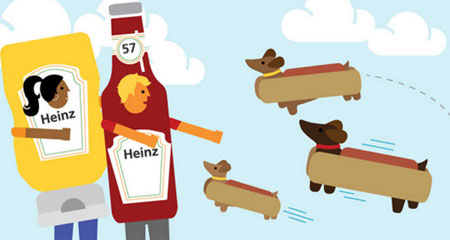This is a guest blog post by Anne Rayner, Global Head of Communications Research at TNS.
Super Bowl ads reach more TV viewers, and receive more media attention, than almost any other advertising opportunity – but such exposure counts for little unless they can overcome the challenges that any ad campaign faces. The ultimate value of the $5 million Super Bowl investment depends on ads' ability to deliver long-term brand benefits. They can only do this effectively when they combine novelty with affective impact (which stirs emotions and creates new types of associations within audiences' brains) and an all-important sense of relevance. But this triple play can be difficult for campaigns to pull off. Did 2016's Super Bowl advertisers make the right calls, in order to deliver it?
TNS analysed the 'Affective Memory Potential' (a combination of novelty, affective impact and relevance) for a range of Super Bowl 50's most high-profile campaigns, and compared this to the scores achieved by advertisers during the previous year's big game. For an additional perspective on the value of Super Bowl ads within multi-platform marketing strategies, they mapped the Twitter footprints created by campaigns from both years.

Different years, different strategies
There were clear distinctions between the game plans adopted by advertisers in 2016, and those of a year earlier. Super Bowl 49 ad breaks featured plenty of tear jerking moments, from Budweiser's Lost Puppy and its heart-tugging journey home to Toyota's proud dad driving his daughter to the airport to join the military. They were far more likely to feature real people, and reportage-style documentary footage (as in Microsoft's true-life tales of inspiring people or McDonalds' 'pay with lovin' campaign).
In contrast, this year's Super Bowl ads focused on the funny bone. They were more likely to use humour as a selling point – and more likely to use celebrities to help get that humour across. They also paid more attention to the potential for social media activation, through teaser campaigns, celebrity endorsements, and the effects of building a campaign around a social cause (as Colgate did with the need to save water and Budweiser did with its Helen Mirren ad taking on drink drivers).
But did the 2016 ads perform?
Perhaps surprisingly though, this combination of feel-good factor and social media savvy came up short on the all-important challenge of combining novelty and affective impact with relevance. When it came to creating Affective Memory Potential, every campaign researched by TNS in 2016 scored significantly lower than the campaigns measured a year earlier. Bud Light's election parody starring Seth Rogen and Amy Schumer, Hyundai's star-studded ads with Ryan Reynolds and Kevin Hart and Mountain Dew's much talked about Puppy Monkey Baby failed to translate slick scripts and novel concepts into genuine human engagement, under-performing on affective impact and relevance. Budweiser's 'Give a Damn' Helen Mirren ad and Colgage's 'Every drop counts' campaign stood out through novelty and succeeded in engaging emotionally, but fell down on relevance.
Social, not emotional
Why did this year's campaigns struggle to balance all three requirements of a successful brand-building ad? Part of the answer lies in the inherently subjective nature of humour, and the difficulty of getting it right when aiming to resonate with large numbers of people, who find very different things funny. Tears, it seems are a more reliable form of emotional connection than laughter.
It could also be argued that ads focused on driving engagement on social media neglected their ability to connect with individuals in ways that were genuinely emotional and relevant. Budweiser, through its drink driving campaign, and Mountain Dew with its deliberately novel and edgy approach both produced distinctive, organic Twitter conversations that point to real resonance with certain communities on social – but neither they nor any other ad did so at real scale. Indeed, in sacrificing immediate relevance for a social cause or a 'watercooler moment', they may have sacrificed much of TV advertising's traditional emotive power.
The stand-out performer
Not every campaign planned out for Super Bowl 50 failed to connect, though. Of all the ads analysed by TNS, one stood out as significantly more effective at driving both long-term brand benefits and short-term word-of-mouth and purchase intent. Significantly, this ad did not rely on celebrities– and although it was funny and surreal, it succeeded in referencing other emotions as well. Perhaps most significantly, it was able to demonstrate a simple, relevant connection between the brand, people's lives, and the occasion of the Super Bowl itself. People in the US know that you eat hot dogs during the big game. Thanks to a 'Weiner stampede' ad in which dogs dressed as hot dogs sprinted over a meadow towards people dressed as condiments, they now know that those hot dogs love Heinz.
Step forward Heinz and 'Meet the Ketchups' – the MVP for Super Bowl 50.

